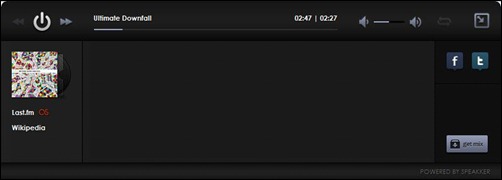

- Html5 audio recording browser support full#
- Html5 audio recording browser support code#
- Html5 audio recording browser support download#
- Html5 audio recording browser support windows#
What formats of browser support?Ĭommonly, HTML5 audio support the following audio formsts as MP3, OGG and WAV. And the browser use the first recognized audio format. The 'source' element enables you to specify alternative audio files which the browser may choose from. The controls attribute adds audio controls, like play, pause, and volume. For playing an audio file in HTML, the tag of HTML5 audio must have 'audio' and 'source' tag.
Html5 audio recording browser support windows#
HTML5, different from HTML 4 or its old version, puts an end to audio plug-in like Microsoft Windows Media Player, Microsoft Silverlight, Apple QuickTime, Adobe Flash, etc. If you choose to edit sound, go to the editing page, you can cut, modify sound, after the modification is completed, you can save to the computer, the saved format can be MP3, WAV, OGG etc. You can save recording sound to your computer, or you can choose to cut and edit sound. The simply HTML audio player takes the stress out of coding so you can easily play audio on your browser. When you are finished recording, click the Stop Record button. HTML5 audio player enables you to play music through your website with ease. Audio tag supports 3 types of audio files: MP3, WAV and OGG.

You can use audio tag to add sound and music in the website. With the introduction of HTML5, audio tag has spread very quickly and it is very well compatible with modern browsers.
Html5 audio recording browser support code#
In this post, we will discuss what HTML5 audio player is? How does HTML5 audio player work, and some free open source HTML5 audio player or code for you to play playlist in HTML5 audio player. HTML5 audio player also puzzles many users when surfing some online sites. Summary: As the wide use of HTML5 in world wide web, the related applications with HTML5 becomes more wide. Working all of this out has allowed me to make a couple of music projects that I’m pretty excited about.How to Use HTML5 Audio Player to Play Audio file and Playlist AddPipe’s Using WebAudioRecorder.js to Record MP3, Vorbis and WAV Audio on Your Website.Recording Audio from the User by Paul Kinlan (Google Developer Advocate).The Most Helpful Resources and Examples I Used Two - We can make an HTTP POST request to a server with our audio data blob for a purpose such as audio recognition (á la Shazam) 7.
Html5 audio recording browser support download#
One - We can download our mp3 (ogg, or wav) blob as a file (Chrome has downloadability already built into the element controls if you click the hamburger dots) This happened to me with Chrome, but not Firefox or Safari. If you’re developing locally, you might have CORS issues while trying to use WebAudioRecorder.js. webAudioRecorder.finishRecording() *Warning This method triggers webAudioRecorder.onComplete. Once we have all the configurations in place, we can go ahead and start the recording with this line: webAudioRecorder.startRecording() Īnd when we’re finished, we stop the recording. This URL allows the blob to be used as the src attribute of our element.īelow webAudioRecorder.onComplete is another method webAudioRecorder.onError that catches and console.logs any errors that occur during the recording/encoding process. We then create a temporary URL that holds the blob’s data (by means of ()) that persists as long as the browser window in which it was created exists. When we stop the recording, the recorded raw audio data is passed automatically as a blob to the webAudioRecorder.onComplete method. A blob is a file-like object that contains raw data and is stored locally in the browser. Here we have our webAudioRecorder and blob as parameters. When () is called, it will send a prompt to the user asking for permission to access the microphone. We’ll store these settings in an object called options. Note that this is an updated version of diaDevices()which has been deprecated.įirst, we want to define the type of media capture–– whether to capture audio, video, or both. The first step in recording live audio input from the user’s microphone is to use WebRTC’s () method, which can record audio and/or video. It’s also here on if you’d prefer to follow along there.
Html5 audio recording browser support full#
Here’s the full code on GitHub if you want to reference it. Web Audio Recording Demonstration Full Implementation

We also include the tag for the WebAudioRecorder.js library, which I’ll address towards the end of the article. To begin, we have a couple of HTML elements to set in order: a button to start and stop recording (with a child that I’ve styled to look like a record button) and an sourceless HTML5 audio element which we’ll later provide with our recording so we can play it back.


 0 kommentar(er)
0 kommentar(er)
